Color illusion 13
Since June 26, 2009
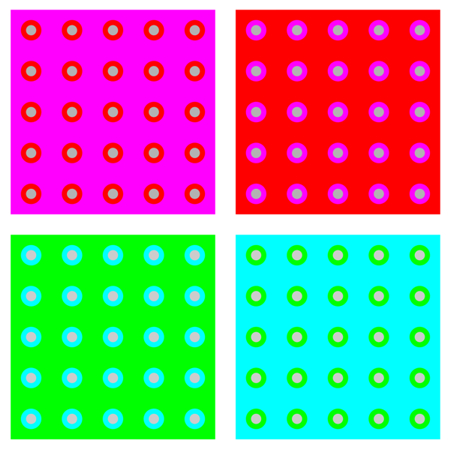
"Yellowish-green, light-blue, magenta, orange holes"
In the upper panels, the left holes appear to be yellowish-green and the right ones light-blue though they are the same gray (k=30%). In the lower panels, the left holes appear to be magenta and the right ones orange though they are the same gray (k=20%).
Copyright Akiyoshi Kitaoka 2010 (December 14)

"Yellow snow"
White dots (R=255, G=255, B=255) appear to be yellowish in the left panels.
Copyright Akiyoshi Kitaoka 2010 (November 20)
 The work "Yellow snow" cannot be explained with the color induction
shown in the Hermann grid illusion or the scintillating grid illusion.
The work "Yellow snow" cannot be explained with the color induction
shown in the Hermann grid illusion or the scintillating grid illusion.

cf.

"Yellow holes and white ones"
White dots (R=255, G=255, B=255) appear to be yellowish in the left panels.
Copyright Akiyoshi Kitaoka 2010 (November 20)

"Black holes and blue ones"
Black dots (R=0, G=0, B=0) appear to be blusih in the right panels.
Copyright Akiyoshi Kitaoka 2010 (November 20)
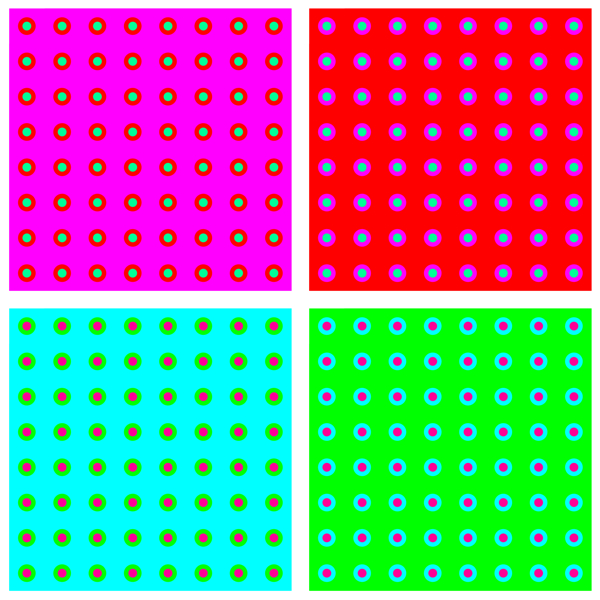
"Yellowish-green, light-blue, orange, and magenta holes"
In the upper panels, the left holes appear to be yellowish-green and the right ones light-blue though they are the same color (R=0, G=255, B=150). In the lower panels, the left holes appear to be orange and the right ones magenta though they are the same color (R=255, G=0, B=150).
Copyright Akiyoshi Kitaoka 2010 (November 20)

"Red holes and blue holes"
The two red holes appear to be different in color though they are physically the same (red). The two blue holes appear to be different in color though they are physically the same (cyan).
Copyright Akiyoshi .Kitaoka 2010 (July 9)

"Bagworm"
Diamonds are the same color gradation, but the upper ones appears to be reddish while the lower ones yellowish.
Copyright Akiyoshi .Kitaoka 2010 (January 6)
Shaded-diamond illusion
Watanabe, I., and Anstis, S. (1997) Contour and shading range affect diamond
illusion. ARVO Annual Meeting, Fort Lauderdale, Florida.
Watanabe, I., and
Anstis, S. (1996) Shaded diamonds also give an illusion of color. ARVO Annual
Meeting, Fort Lauderdale, Florida.
Watanabe, I., Cavanagh, P., Anstis, S.,
and Shrira, I. (1995) Shaded diamonds give an illusion of brightness. ARVO
Annual Meeting, Fort Lauderdale, Florida.
Professsor Isao Watanabe's webpages
Professor Michael Bach's webpages

"Good complexion 2"
Color assimilation makes pale face better.
Copyright Akiyoshi .Kitaoka 2009 (August 16)
"Handkerchief of hearts"
There appear pink and orange hearts, though they are the same color.
Copyright Akiyoshi Kitaoka 2009 (July 7)
"No binocular rivalry in the color constancy eye"
Try to fuse them binocularly. Then, the left eye shows binocular rivalry between orange and green, while the right eye does not. This observation is remarkable since the right eye is the same color as the left eye in each image.
Copyright Akiyoshi Kitaoka 2009 (June 29)
This phenomenon might suggest that color constancy should reflect a rather low-level visual process.

"Binocular rivalry in the color constancy eye"
Try to fuse them binocularly. Then, the right eye sometimes shows binocular rivalry between cyan and red, while the left eye does not. This observation is remarkable since the right eye is the same gray for each image.
Copyright Akiyoshi Kitaoka 2009 (June 29)
This phenomenon might also support the idea that color constancy should reflect a rather low-level visual process.
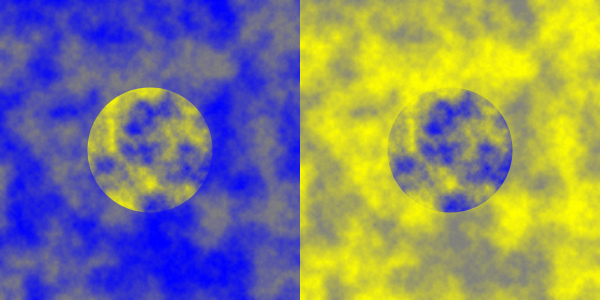
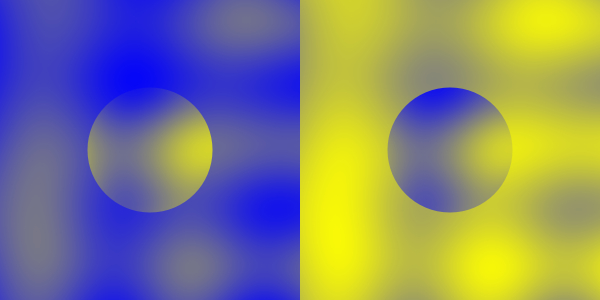

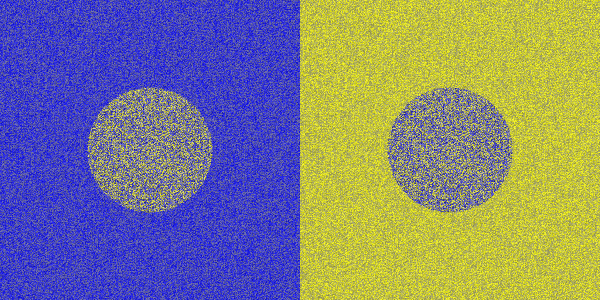
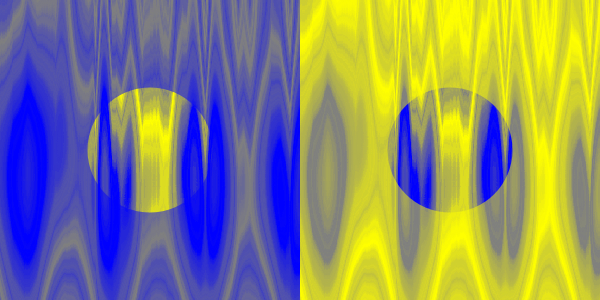
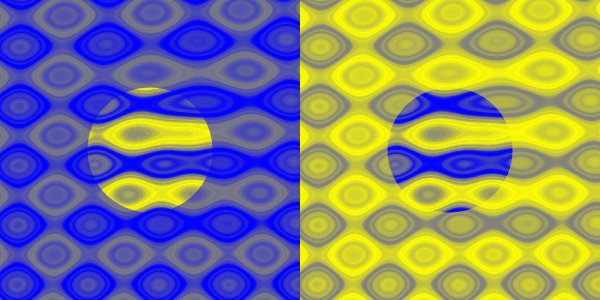


"The moon and the earth"
In each image, the left disk appears to yellowish while the right one bluish, though they are the same in color and texture.
Copyright Akiyoshi Kitaoka 2009 (June 26)
cf.
 |
Anderson's lightness illusion (Anderson and Winawer, 2005) |
The inset surrounded by the darker background appears to be lighter than the same pattern surrounded by the brighter background. The continuity of texture is critical in this illusion. new! |